Local News
Velimir Kon fulfilled goal to teach Aboriginal students
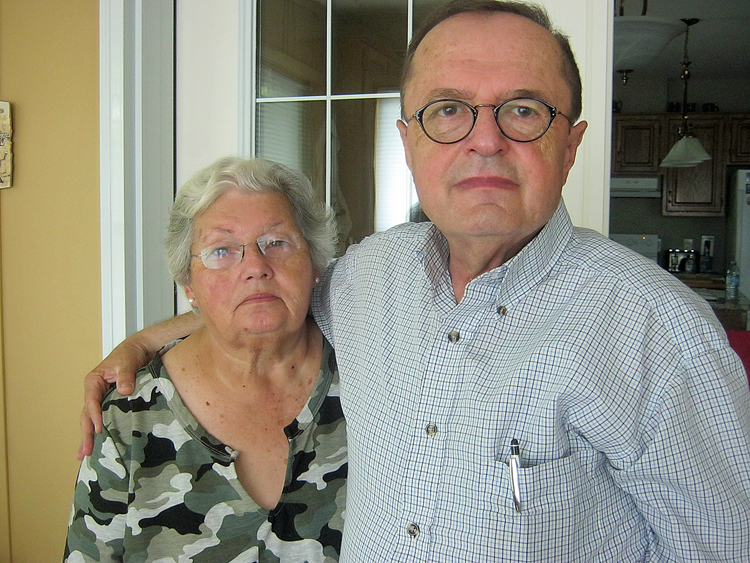
By MYRON LOVE When Velimir Kon decided 20 years ago that he wanted to dedicate his career to teaching Aboriginal students, he recalls how surprised everyone was at the idea.
“People were in shock,” says Kon – who at a time when he was in his early 50s – had walked away from a comfortable position as a lecturer at the University of Guelph to pursue a new career as a high school maths teacher. “But I felt an empathy for the First Nations communities and was confident that I, as a teacher would be able to make a difference.”
The only person (besides his wife, Branka) who supported Kon’s choice of career path, he notes, was a Chabad rabbi in Hamilton who suggested that the teacher would be following a path pre-ordained by God.
Big Trout Lake in northwestern Ontario and Berens River on the southeastern side of Lake Winnipeg, the First Nations communities where Kon taught for a combined 15 years, were two of the more recent stops on a lengthy life journey for Branka and Velimir Kon that began 70-some years ago in Communist postwar Yugoslavia. Velimir grew up in a community called Osijek – with a Jewish community of about 250 – in what is now Croatia. Branka is from Belgrade, the former capital city of Yugoslavia, which is now the capital of Serbia.
Both Velimir and Branka are children of Holocaust survivors whose fathers were leaders in their respective Jewish communities. They met in a Jewish summer camp (Velimir is three years older) and married in 1975.
While their Jewish communities were largely assimilated, Velimir notes that his zaida was a religious Zionist – his father more of a social Zionist. Velimir himself was a Jewish youth leader in his community. “I visited Israel twice in the 1970s and did consider staying there,” he recalls.
Branka describes her family as Jewish Conservative. “We observed all the Jewish holidays,” she says.
Velimir pursued a career in higher education focusing on agriculture – culminating in a Ph.D. in Agricultural Economics while Branka became a nurse specializing in neo-natal care.
Although the couple were comfortable in Yugoslavia, Velimir notes that by 1988, he could see that in the new post-Tito era that difficult times were coming. Thus, Velimir and Branka and their young daughters, Deborah and Lea, made the move to Canada.
“Everybody was surprised by our decision,” he recalls. “But, three or four years later, civil war broke out and Yugoslavia was no more.”
The family settled in Guelph, Ontario, where Velimir began his career as a lecturer at the university.
It was while at the university that he first met Michael Eskin, the long time professor in the University of Manitoba department of Food and Human Nutritional Sciences, who was at Guelph University for a conference. The Kons and the Eskins became close friends. (I actually met Velimir and Branka in early July when Michael invited us to attend his inauguration into the Manitoba Agricultural Hall of Fame.)
A second couple who became close friends of the Kons in Winnipeg were Gerry and Sharna Posner. Velimir met The Jewish Post & News columnist – who now lives in Toronto – the first time he attended services at the Shaarey Zedek. (Gerry arranged for Velimir and Branka to buy a house right next door to the Posners.)
Velimir reached another turning point in his life 20 years ago, when, at the age of 51, he decided to quit the university and become a high school teacher. “Because my credentials were not from a Canadian university, I came to realize that I was never going to become a professor or even assistant professor,” he recalls. “ I wanted to do something else where I could get steady work. I liked the idea of working with young people.”
So he enrolled in Education at the University of Ottawa. “I liked the idea of working with First Nations students,” he says. “I felt that I could bring compassion and empathy to my teaching and, in a typically Jewish way, look at old problems with new eyes.”
As noted previously, he began his teaching at Big Trout Lake before moving to the Berens River Reserve (population about 1,000) in 2007. Initially, he taught Grades 8 and 9 mathematics.
“I quickly learned that my students didn’t know basic math,” he recounts. I needed to build up their knowledge one step at a time. I incorporated their own life experiences to help them better understand math.”
He also introduced a chess club to the school. “It was a challenge interesting young people to chess who are mainly used to outdoor activities,” he points out. “In our first session, I explained chess in terms of hunting and the need in both cases to develop a strategy. I had ten students in the club.
“One of the benefits of chess for the students is that those who were suffering with ADHD learned to focus better.”
After a few years teaching at the high school, Kon was appointed adult education coordinator for the community. “Teaching literacy and numeracy are very important skills for people,” he notes.
Kon’s success at Berens River can be measured by the frequency with which he was invited to teach as a guest lecturer in other nearby First Nations communities.
Throughout his tenure at Berens River, he points out, he was also aware of the importance of living and modeling a Jewish life. He kept kosher – with Branka bringing him kosher food from Winnipeg (where she and her daughters were living while Velimir was at Berens River whenever she could get out to the community for Shabbat. She continued working as a nurse in Winnipeg.) Or Velimir would stock up when coming home to visit on Yom Tov when he could or at Pesach.
And Shabbat candles always lit at his Berens River residence. He recalls one time when Branka was visiting and the couple invited some of Velimir’s colleagues for Shabbat supper. On one of those occasions, a colleague revealed that she, too, was Jewish but had never lit Shabbat candles.
Another time, Danny Koulack – best known for his association with Finjan – was in Berens River to lead a two-day workshop. “It was Chanukah and we got snowed in,” Kon recalls. “We organized a Chanukah party and invited all the teachers. We lit the candles and everyone joined in the singing.”
Velimir retired in 2017 – about the same as Branka. In 2020 the couple – along with younger daughter Lea, moved to Victoria where Deborah was living and working. All four Kons recently returned to Winnipeg after Lea was hired by the government.
“In a way,” Velimir notes, “working in First Nations Communities, I saw myself as an unofficial ambassador for Israel and the Jewish People. I found that people respected my beliefs and that there was strong support in the communities for Israel. One individual even apologized to me for the Canadian Government’s refusal to accept the Jewish refugees on the St. Louis in 1938.”
Local News
Thank you to the community from the Chesed Shel Emes
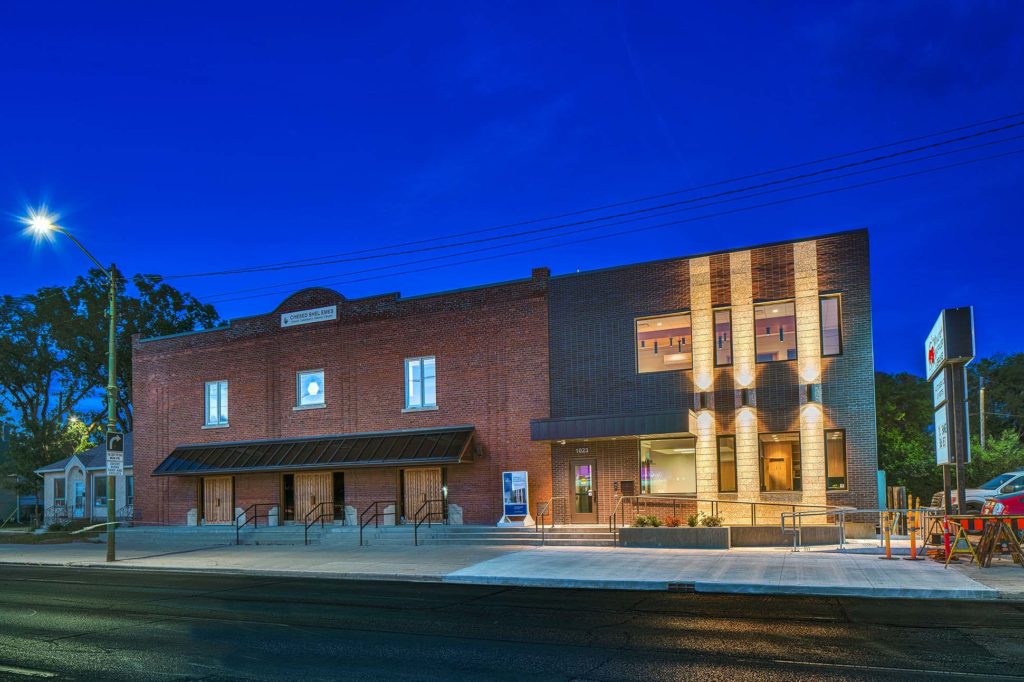
We’re delighted to share a major milestone in our Capital Campaign, “Building on our Tradition.” Launched in November 2018, this campaign aimed to replace our outdated facility with a modern space tailored to our unique needs. Our new building is designed with ritual at its core, featuring ample preparation space, Shomer space, and storage, creating a warm and welcoming environment for our community during times of need.
We’re grateful to the nearly 1,000 generous donors who contributed over $4 million towards our new facility. A $750,000 mortgage will be retired in November 2025, completing this monumental project in just seven years.
We’re also thrilled to announce that our Chesed Shel Emes Endowment Fund has grown tenfold, from $15,000 to $150,000, thanks to you, the Jewish Foundation of Manitoba’s FundMatch program, and Million Dollar Match initiative in 2024. Our fund helps ensure that everyone can have a dignified Jewish funeral regardless of financial need.
As we look to the future, our goal remains to ensure the Chevra Kadisha continues to serve our community for generations to come. Our focus now shifts to replenishing our savings account and growing our JFM Endowment fund.
We’re deeply grateful for your support over the past several years.
It’s our privilege to serve our community with care and compassion.
With sincere appreciation,
Campaign cabinet: Hillel Kravetsky, Gerry Pritchard, Stuart Pudavick,
Jack Solomon, and Rena Boroditsky
Murray S. Greenfield, President
Local News
Winnipeg Beach Synagogue about to celebrate 75th anniversary
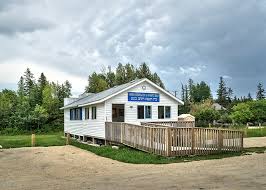
By BERNIE BELLAN (July 13) In 1950 a group of cottage owners at Winnipeg Beach took it upon themselves to relocate a one-room schoolhouse that was in the Beausejour area to Winnipeg Beach where it became the beach synagogue at the corner of Hazel and Grove.
There it stayed until 1998 when it was moved to its current location at Camp Massad.
On August 2nd members of the synagogue will be holding a 75th anniversary celebration.
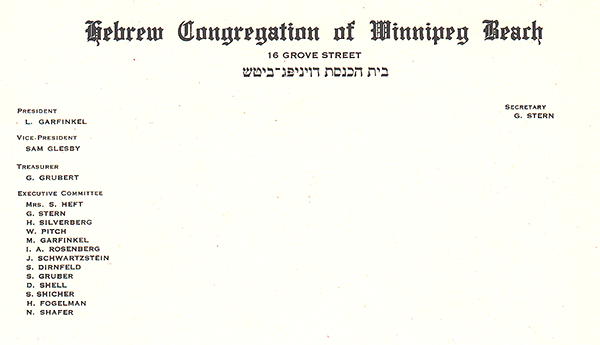
As part of the celebration anyone who is a descendant or relative of any of the original members of the first executive committee (as seen in the photo here) is invited to attend the synagogue that morning.
If you are a relative please contact Abe Borzykowski at wpgbeachshule@shaw.ca or aborzykowski@shaw.ca to let Abe know you might be attending or for more information about the 75th anniversary celebration.
We will soon be publishing a story about the history of the beach synagogue, which is something I’ve been writing about for over 25 years.
Local News
Vickar Family cuts ribbon on new Tova Vickar and Family Childcare Centre
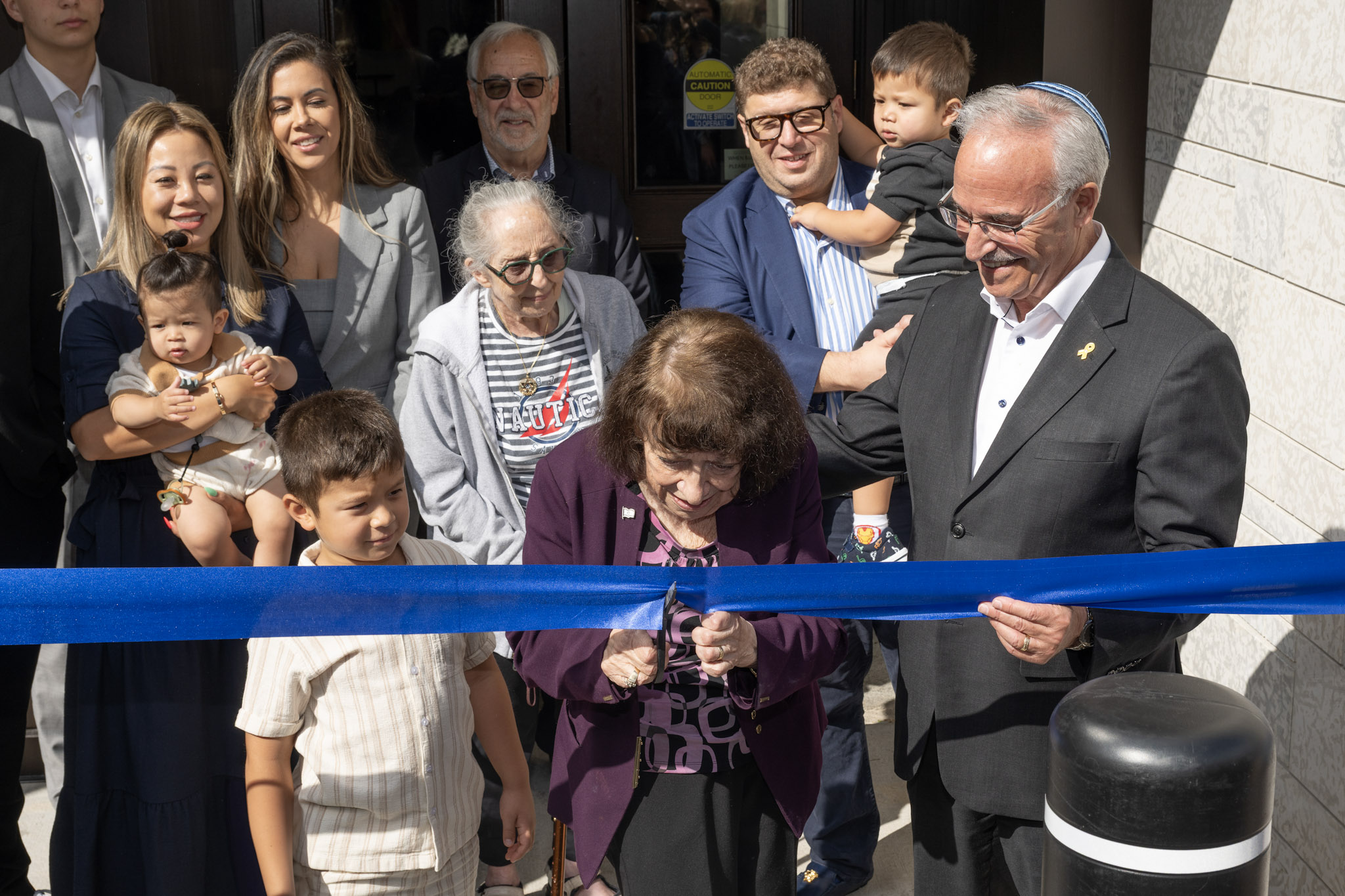
By MYRON LOVE In the words of Larry Vickar, the Shaarey Zedek’s successful Dor V’ Dor Campaign “is not only a renewal of the synagogue but truly a renewal movement of Jewish life in our community.”An integral part of that renewal movement was the creation of a daycare centre within the expanded synagogue. On Monday, June 23, Larry and Tova Vickar cut the ribbon, thereby officially opening the Tova Vickar and Family Childcare Centre in the presence of 100 of their family members, friends and other supporters of the project.
The short program preceding the morning ribbon-cutting began with a continental breakfast followed by a welcome by both Fanny Levy, Shaarey Zedek’s Board President, and Executive Director Dr. Rena Secter Elbaze. In Elbaze’s remarks, she noted that Larry and Tova wanted their family (including son Stephen and family, who flew in from Florida) and friends at the event to celebrate the opening of the Tova Vickar and Family Childcare Centre, “not because of the accolades, but because, as Larry put it, he hopes that their investment in the congregation will inspire others to do the same.”
“When Larry and I spoke about what this gift meant to him and the message he wanted people to take away,” she continued, “I couldn’t help but connect it to the teachings of Reb Zalman Schachter-Shalomi whose book – Age-ing to Sage-ing – changes the whole way we look at the concept of ageing and basing it on our ancestral teachings.”
She explained that his concept of “Sage-ing” is based on three key ideas – Discover your meaning and purpose; accept our mortality and think about the legacy you want to leave.
“Larry spoke about these exact concepts when we met,” she said.
Elbaze also noted the presence of Shaarey Zedek’s newly-arrived senior Rabbi Carnie Rose, former Rabbi Alan Green, and area MLAs Mike Moroz and Carla Compton.
Larry Vickar expressed his great appreciation for all those in attendance. “Tova and I are deeply moved to stand here with you today for this important milestone in our community”, he said. “We are grateful to be surrounded by all of you, the people we care about, our family and friends… you who have touched our lives and played some part in our journey.”
